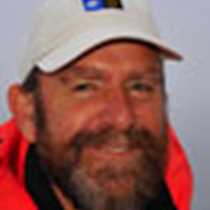Fair Isle, Shetland
Last night we left Bergen, on the coast of Norway, and sailed west in the wake of the Viking adventurers of old. We slept soundly as our trusty ship followed sea routes well traveled over a thousand years ago, dreaming perhaps of our ancestors: no sleep for them, rowing through the night for fabled islands lost in the ocean.
We woke to a lively sea and the first signs of sea life: fulmars, puffins and gannets confirmed that we were approaching Shetland, the most northerly of the British Isles. Suddenly, out of the ocean haze, the sheer cliffs of Fair Isle stood up like book-ends, their sandstone beds buckled almost vertical. Shetland itself is remote, but Fair Isle, its furthest satellite, lies 25 miles south of the main archipelago in lonely splendour, at the mercy of tide, wind and bursting seaspray. We tried the bays on the north and east side for a safe landing. Difficult cross swells thwarted us at the two traditional landing sites. We heard from the coastguard on shore that a gale the night before had thrown up this contrary sea from the south-east. But National Geographic Endeavour is our name, and at last we found a sheltered anchorage on the rugged west coast. Our fleet of Zodiacs then threaded their way between soaring cliffs and high sea-stacks to reach a quiet gully where we could clamber ashore to meet the locals. These included piping oystercatchers, burrowing puffins, clamouring guillemots and jet-black shags on their whitewashed eyries. We climbed the rim of the cliffs on a springy turf, spangled with the blue of squill flowers, close-cropped by rabbits and sheep. On the summit we paused at a high, ruined lookout from which the island folk kept watch for Viking raiders in centuries past. Then we ventured down past black, brown, and cream Shetland sheep, over rickety stiles, through tiny whitewashed crofts and along the one winding road to reach the village hall. Journey’s end: tea and cakes laid on by the islanders and a chance to enjoy the warmth and hospitality for which Shetland is famous. There was a time when a ship from Bergen meant trouble: today it brought a peaceful, shared camaraderie with one of the most isolated communities in Europe.
Last night we left Bergen, on the coast of Norway, and sailed west in the wake of the Viking adventurers of old. We slept soundly as our trusty ship followed sea routes well traveled over a thousand years ago, dreaming perhaps of our ancestors: no sleep for them, rowing through the night for fabled islands lost in the ocean.
We woke to a lively sea and the first signs of sea life: fulmars, puffins and gannets confirmed that we were approaching Shetland, the most northerly of the British Isles. Suddenly, out of the ocean haze, the sheer cliffs of Fair Isle stood up like book-ends, their sandstone beds buckled almost vertical. Shetland itself is remote, but Fair Isle, its furthest satellite, lies 25 miles south of the main archipelago in lonely splendour, at the mercy of tide, wind and bursting seaspray. We tried the bays on the north and east side for a safe landing. Difficult cross swells thwarted us at the two traditional landing sites. We heard from the coastguard on shore that a gale the night before had thrown up this contrary sea from the south-east. But National Geographic Endeavour is our name, and at last we found a sheltered anchorage on the rugged west coast. Our fleet of Zodiacs then threaded their way between soaring cliffs and high sea-stacks to reach a quiet gully where we could clamber ashore to meet the locals. These included piping oystercatchers, burrowing puffins, clamouring guillemots and jet-black shags on their whitewashed eyries. We climbed the rim of the cliffs on a springy turf, spangled with the blue of squill flowers, close-cropped by rabbits and sheep. On the summit we paused at a high, ruined lookout from which the island folk kept watch for Viking raiders in centuries past. Then we ventured down past black, brown, and cream Shetland sheep, over rickety stiles, through tiny whitewashed crofts and along the one winding road to reach the village hall. Journey’s end: tea and cakes laid on by the islanders and a chance to enjoy the warmth and hospitality for which Shetland is famous. There was a time when a ship from Bergen meant trouble: today it brought a peaceful, shared camaraderie with one of the most isolated communities in Europe.




